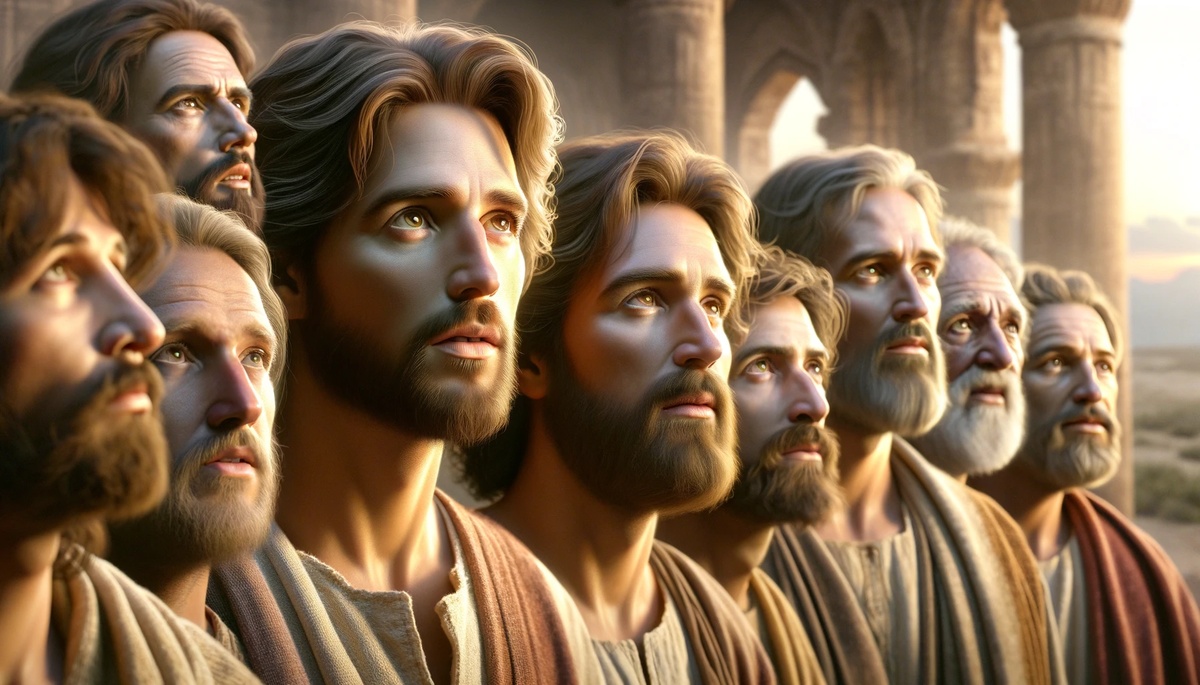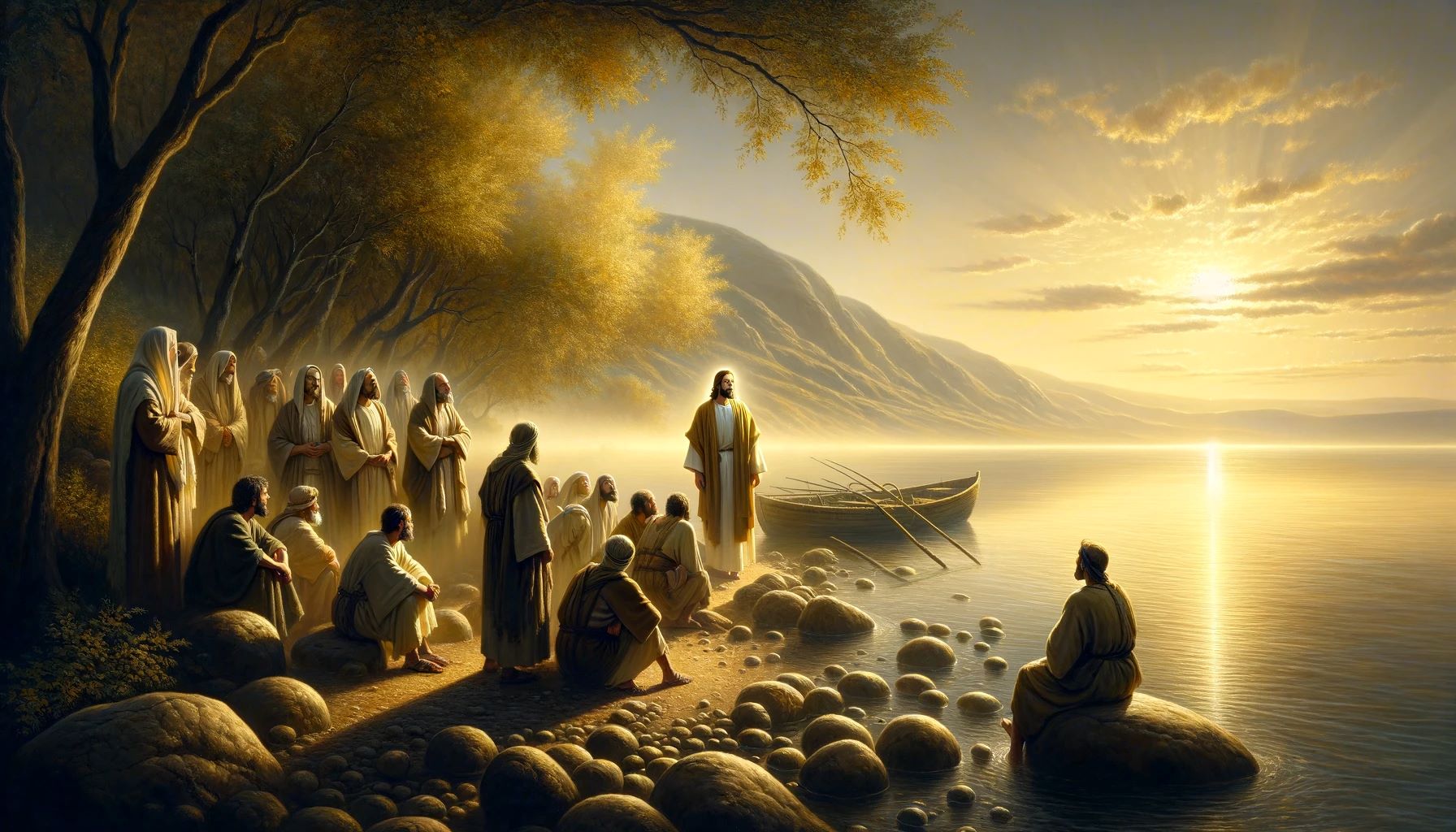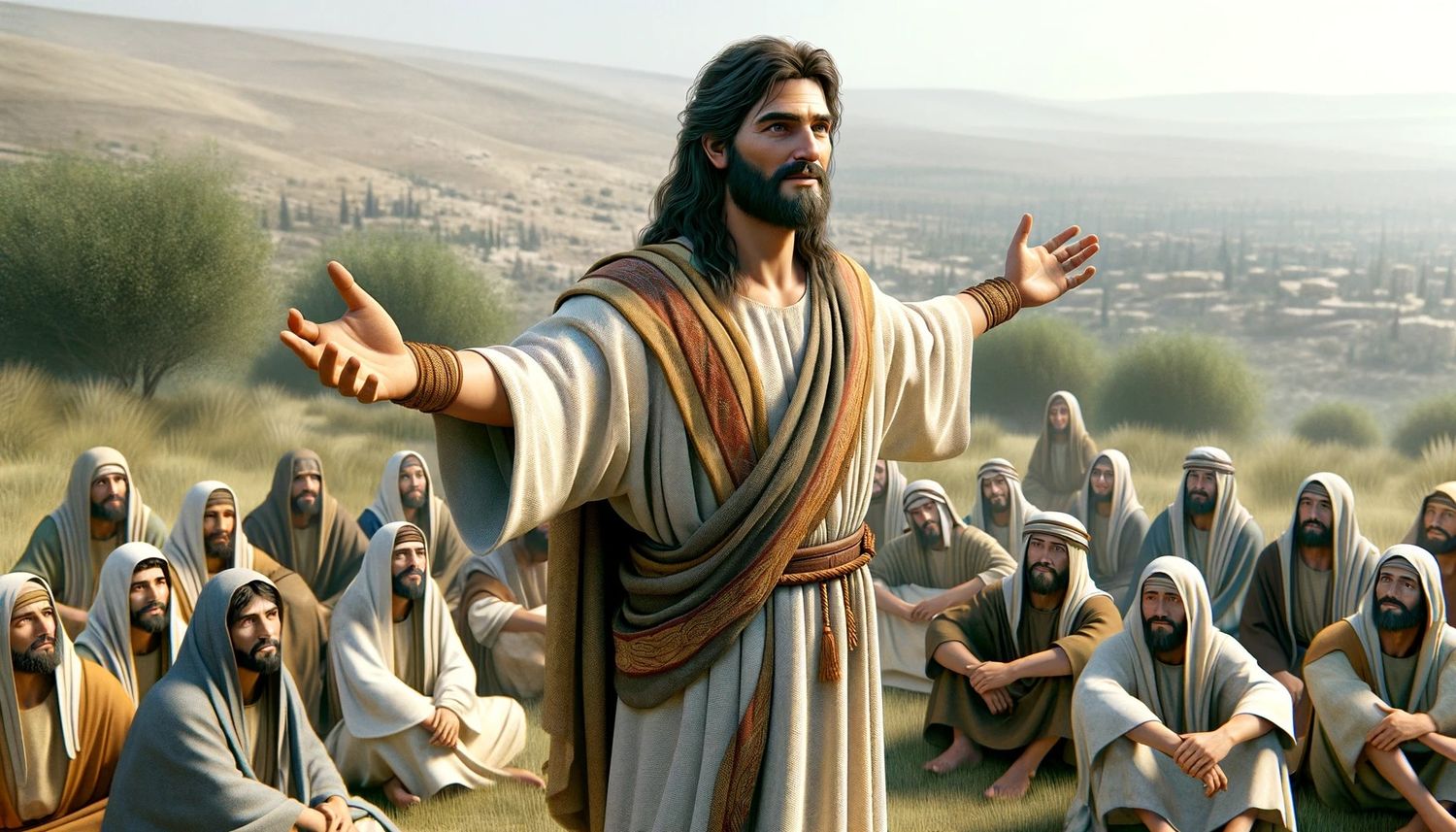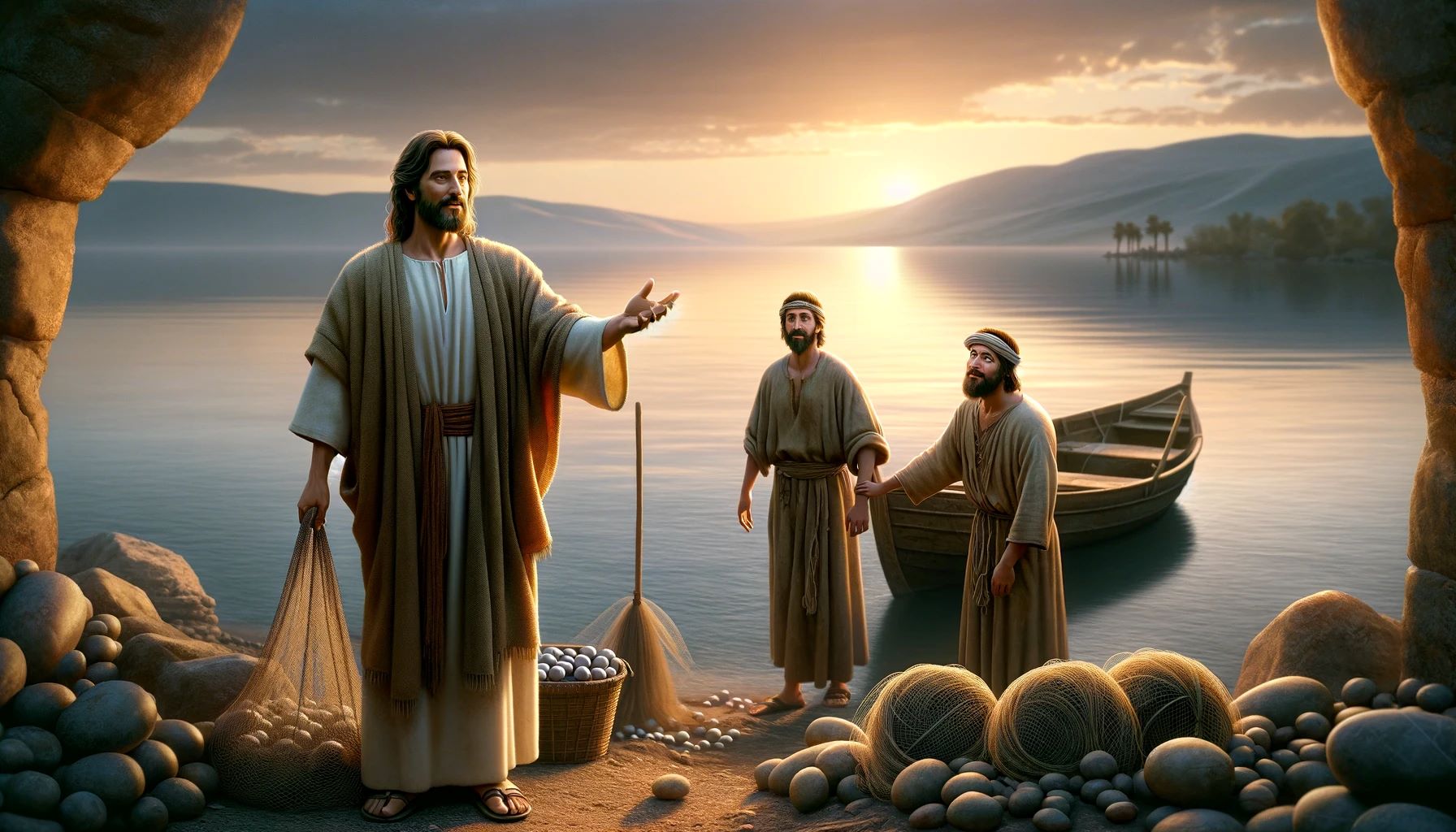Home>Christian Resources>Who Were The 12 Disciples Of Jesus?


Christian Resources
Who Were The 12 Disciples Of Jesus?
Modified: January 9, 2024
Jason DeRose, Managing Editor at Christian.net, uses his expertise in religion and journalism to deepen understanding of faith's societal impacts. His editorial leadership, coupled with a strong academic background, enriches the platform’s diverse content, earning him recognition in both journalism and religious circles.
The 12 Disciples helped Jesus fulfill his mission here on earth. Learn more about the life of these disciples and what they teach us today.
(Many of the links in this article redirect to a specific reviewed product. Your purchase of these products through affiliate links helps to generate commission for Christian.net, at no extra cost. Learn more)
The 12 Disciples also known as the 12 Apostles, served as the foundation of the first Church. They played a major role in ministering to the people during Jesus’ time on earth, and after his ascension. While with Jesus, they learned from him and helped him to fulfill his mission here, on earth. They were there to witness the completion of what was prophesized decades before the birth of Jesus. Despite the disciples’ backgrounds and professions, Jesus saw their potential. He called them to be fishers of men, future missionaries. He trained them for three years to become leaders who would later continue the work he started. Jesus gave these 12 disciples a special authority and a sacred mission to accomplish (Matthew 28:16-20). These 12 disciples worked hard to serve other people and testify the good news. However, they also faced various persecutions along the process.
Get to know more about the lives of Jesus’ 12 Disciples as we share all the things you should know about them. Let their life stories serve as an inspiration for us to grow our faith. We can deepen our relationship with God and be better modern-day disciples of Jesus Christ.
Simon Peter

One of the 12 Disciples, Simon Peter, son of Jonas, was a fisherman by trade who lived in Bethsaida and Capernaum. He was part of Jesus’ inner circle, one of the 12 disciples. Interestingly, he is also the only married disciple (Luke 4:38). Peter was originally known as Simon, but Jesus gave him a nickname of Cephas, which translates to Peter, meaning “rock”. In the Bible, Peter was an impetuous man, He was emotional, always spoke whatever was on his mind, and impulsive. But, he was the natural leader and served as the spokesman among the 12 disciples. Although he denied Jesus three times after Jesus’ arrest, Peter redeemed himself after the resurrection. Despite how many times he failed and fallen, he recovered his courage and integrity to boldly preach the good news.
Peter is one of the most prominent leaders of the early church. He was the author of two books in the Bible, 1 Peter and 2 Peter. Other than that, he also plays a major role in the gospels. The Gospel of Mark records Peter’s account of Jesus’ ministry through Mark the Evangelist, his companion, who is widely believed to be John Mark. It is said that Peter did his missionary and evangelistic work as far as Babylon. It is also said that Peter is the rock and foundation of the Church with Jesus as the Church’s cornerstone (Matthew 16:18).
Peter died a martyr by crucifixion around 64 A.D. during the time of Nero. He requested to be crucified upside down as he was not worthy to die the same way as Jesus. His symbol is a cross upside down with crossed keys. Today, his remains are in Saint Peter’s Basilica in Rome.
Read more: Who Were John The Baptist’s Disciples
Andrew
![]()
Andrew, son of Jonas, was Simon Peter’s brother. Like his brother, he was also a fisherman and lived in Bethsaida and Capernaum. Originally, he was a disciple of John the Baptist but left to follow Jesus. It is said Andrew left John because John wanted him to as he knew Jesus was the Messiah (John 1:35 – 37). Andrew is also the first follower of Jesus Christ and was the one who brought his brother, Peter, to follow Jesus (John 1:40). He wasn’t a dominant person and mostly lived under the shadow of his brother, Peter. Whenever he and Peter are mentioned together, Andrew is always mentioned second and referred to as Peter’s brother. On the other hand, Peter is never referred to as Andrew’s brother. Yet, Andrew was a passionate preacher and shared the gospel boldly. His main purpose was to bring others to Jesus.
Andrew was also a significant contributor to the early church. Many scholars say that he preached in Scythia, Greece, and Asia Minor. Additionally, he is also the first to have the title of Home and Foreign Missionary. Three countries, Russia, Scotland, and Greece, also claim him as their Patron Saint.
In 69 A.D., he died a martyr in the town of Patra in Achaia, Greece. Andrew faced death with boldness and courage as Governor Aepeas arrested and condemned him to die on the cross. Feeling unworthy to die the same as Jesus, he begged for him to be different. He was crucified on an X-shaped cross, tying him to prolong his suffering. Andrew’s apostolic symbol is a two-crossed fish. His remains are located in the Cathedral of Amalfi in Amalfi, Italy.
James, Son of Zebedee

James, Son of Zebedee and Salome, brother of Apostle John was also one of Jesus’ 12 disciples. He was a fisherman who lived in Bethsaida, Capernaum, and Jerusalem. James, part of Jesus’ inner circle, is often called James the Greater. This is to distinguish him from James, Son of Alpheus. The New Testament doesn’t have much information about James, and his name never appears apart from his brother, John. Like Andrew, he also lived in the shadow of his brother. Yet, he was a man of courage and forgiveness.
James preached in Jerusalem and Judea. He was arrested and killed by the sword, most likely by way of beheading during the time of Herod Agrippa. It is also said that after James was arrested and led to the place of execution, his unnamed accuser was moved by his courage. James’ accuser repented and converted on the spot and asked to be executed alongside James. James the Greater was the first martyr among the 12 disciples and the only one recorded in the Bible (Acts 12:2). His symbol is three shells, a sign of his pilgrimage by the sea. We can find his remains in Saint James Church in Compostela, Spain.
John

John Boanerges, son of Zebedee and Salome, brother of the Apostle James is also known as John the Evangelist. Like his brother, he was also a fisherman who lived in Bethsaida, Capernaum, and Jerusalem. John is known as the disciple whom Jesus loved and the third member of Jesus’ inner circle. He was an ambitious man with a fiery temper and an intolerant heart. Yet, with his special devotion to Jesus, he gained a favored place in Jesus’ inner circle.
John is one of the four authors of the gospels who also wrote a large portion of the New Testament books. Thes books include 1 John, 2 John, 3 John, and the book of Revelation. Interestingly, he is also the disciple who wrote more about love than any other New Testament author. It indicates that his proximity to Jesus taught him much about love. He is known to have preached among the churches of Asia Minor.
There was an attempt on John’s life, but God spared him. Instead, he was exiled to the island of Patmos under Domitian. They allowed him to return to Ephesus, where he then governed churches in Asia. Among the 12 disciples, he was the only one who died in natural death. His symbol is a chalice with a snake in it. Today, his remains are located in the Basilica of Saint John in Ephesus, Turkey.
Philip

Similar to Peter and Andrew, Philip also came from Bethsaida. He becomes a living personality in the Gospel of John. Philip believed that Jesus was the prophet described by Moses. It is also said that he was a man with a warm heart and a pessimistic head. Yet, he gave all he had, and in return God used him to advance his kingdom.
Philip’s most notable moment in the gospels is when he brought Nathanael or Bartholomew to Jesus (John 1:45-46). Traditionally, it says that Philip preached the gospel in Phrygia, Greece, and Syria. It is also Philip who emphasized the cross as a sign of Christianity and Victory. The early church often mistook him as Philip the Evangelist.
Eventually, he traveled to the Egyptian city of Heliopolis, where he was whipped and thrown into prison. An account said that he died a martyr around 54 A.D by hanging. He requested that his body be wrapped in papyrus and not by linen. He believed that even his dead body was unworthy of receiving the same treatment as Jesus. A basket is the symbol of Philip because of his part in feeding the five thousand. His remains are in the Holy Apostles Basilica in Rome.
Read more: Who Were John The Baptist Disciples
Bartholomew

Also known as Nathanael, Bartholomew was the son of Talmai, who lived in Cana in Galilee. Among the 12 disciples, he was the only one who came from royal blood or noble birth. His father was the king of Geshur, whose daughter, Maacah, was the wife of David, mother of Absolom. The name ‘Nathanael’ was probably his first name, whom Jesus called a true Israelite in whom there’s nothing false.
Although the New Testament gives little information about him, Bartholomew was a great searcher of the Scripture. He was also a scholar in the law and the prophets. According to other accounts, he’s one of the Church’s most adventurous missionaries. He preached with Philip in Phrygia and Hierapolis and also in Armenia. The Armenian Church claims him as its founder and martyr. He also preached in India, where he translated the book of Matthew into their language.
Like the other disciples, Bartholomew most likely died as a martyr too. Regarding the cause of his death, some accounts suggested that they beat, crucified, and beheaded him. The most popular yet also the most gruesome way of death is that he was allegedly flayed alive and then beheaded. However, others say that he was beaten and then crucified, or they crucified him upside down. Three parallel knives are his apostolic symbol. Today his remains are in Saint Bartholomew Church in Rome.
Matthew

Matthew, also known as Levi, was a son of Alpheus who lived in Capernaum. He was a publican and a tax collector, the most despised people in the Jewish culture. Tax collectors were hated for being very unjust. However, Jesus saw the potential in Matthew and chose him. When Matthew heard Jesus say, “Follow me”, he immediately left everything, obeyed, and followed him. Matthew recognized that Jesus is someone worth sacrificing for.
Matthew was the first man who wrote down the teachings of Jesus Christ and is one of the four gospel authors. He wrote the Gospel of Matthew in the Hebrew language. It is also said that he brought the gospel to Ethiopia and Egypt. Like the 12 disciples, he died a martyr in Ethiopia. He was stabbed in the back with a spear by an assassin sent by King Hertacus after he criticized the king’s morals. His apostolic symbol is three money bags. And his remains are located in the Cathedral of Salerno in Salerno, Italy.
Thomas

Thomas Didymus, often referred to as “Doubting Thomas”, lived in Galilee. Scholars say that Thomas was his Hebrew name, while Didymus was his Greek name. He was a pessimist and bewildered man; a man who couldn’t believe it until he had seen it. Thomas was famous for refusing to believe that Jesus had risen from the dead until he saw the nail prints’ in Jesus’ hands and the gash of the spear in his side. Yet, he also demonstrated his devotion and courageous faith (John 11:26; John 14:4-5; and John 20:28). Jesus invited Thomas to put his finger in the nail prints in his hands and on his side. Then all his doubts immediately vanished and gained a much deeper faith.
An account says that Thomas preached in Parthia, Persia, and India. It is strongly suggested that Thomas started the Christian church in India. His cautious approach to believing in the resurrection established the foundation for evidence-based faith. It is also the basis of the Protestant teaching of “sola fire” or “faith alone”. Today, he serves as an inspiration for Christians, that those who have not seen and yet have believed.
Like the 12 disciples, Thomas also died a martyr. According to the Syrian Christian tradition, he was killed by spears by the angered locals while preaching. It happened in Saint Thomas Mount in Chennai, India, on July 3, 72 AD. His symbol is a group of spears, stones, and arrows. Today, his remains are located in the Basilica of Saint Thomas the Apostle in Ortona, Italy.
The Twin
It is interesting to note that the Bible didn’t give Thomas a real name. Thomas comes from the Aramaic word tĕʾomâ, which means ‘twin’ and Didymus is a Greek word which also means ‘the twin’. Tĕʾomâ is only used as a description, while Didymus can be used as a description or a name. Yet, people call him Thomas.
James, Son of Alpheus

James, also called James the Less, was a son of Alpheus and Mary. He was also the brother of Jude and lived in Galilee. He is the oldest among the 12 disciples. And unlike James the Greater, he is one of the most obscure apostles. The New Testament has little information about him. However, we know that he was present in the upper room of Jerusalem after Jesus ascended to heaven. He was also known as a man with a strong character, exemplary, and fiery man.
According to tradition, he preached in Palestine and Egypt, where they crucified him. Another account also claimed that James also had a martyr death like the other disciples. At the age of 94, the persecutors beat and stoned him to death, killed from a blow to the head. However, another tradition says that his body was sawed in pieces. The saw became his symbol. His remains are in the Holy Apostles Basilica in Rome.
Simon the Zealot

Simon the Zealot was a Canaanite who lived in Galilee. He is also one of the less known disciples in the Bible. Interestingly, his name was only mentioned three times in the bible, so we don’t know about him except that he was a Zealot. Zealots were fanatical Jewish nationalists who had a heroic disregard for the suffering involved and the struggle for what they regarded as the purity of their faith. They were crazed with hatred for the Romans. According to Josephus, Zealots were reckless persons, zealous in good practices, and reckless in the worst kind of actions.
It gives us an idea that Simon was a fanatical nationalist. He devoted his life to the law and a man with an intense hatred for those who dared to compromise with Rome. However, through following Jesus, he emerged as a man of faith. He abandoned all his hatred for the faith that he showed toward Jesus. He showed a love that he was willing to share with the rest of the disciples, especially Matthew, the Roman tax collector. Simon saw that Jesus will not force a service.
Simon the Zealot was present with other disciples in the upper room of Jerusalem after Jesus had ascended to heaven. An account says that he preached in Mauritania on the west coast of Africa, and then he went to England. He also died martyr-like other disciples in England, where they crucified him. It happened either around the year 65 A.D. or 107 A.D. A fish lying on a Bible is his apostolic symbol. This indicates that he was also a former fisherman who became a fisher of men through preaching. His remains are at the Altar of the Crucifixion in Vatican City.
Judas Thaddeus

Judas Thaddeus, also known as Jude or Lebbeus, was a son of Alpheus or Cleophas and Mary. He lived in Galilee and was a brother of James the Younger. He was also called Judas the Zealot. So like Simon, he was an intense and violent nationalist with the dream of world power and domination by the Chosen People. In John 14:22, Jude asked Jesus in the Last Supper why he intended to show himself to them and not to the world. Jesus answered that the way of power can never substitute for the way of love. He saves the deepest revelations of himself for those who love and obey him.
According to an account, Jude preached in many places, including the Euphrates river, and healed many people. He went to Edessa to preach the gospel, a few years after the Pentecost. He healed Abgar, the King of Edessa. Eusebius, the historian, saw the archives at Edessa contained the visit of Jude and the healing of the king. Unfortunately, the records were now destroyed. He also had a martyr death around 65 A.D., in Beirut where his body was filled with arrows. His apostolic symbol is a ship because he was a missionary thought to be a fisherman. His remains are in Saint Peter’s Basilica in Italy.
Judas Iscariot
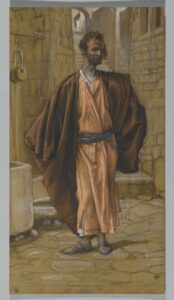
The last from the 12 disciples, Judas Iscariot is the disciple famous for betraying Jesus. He was the son of Simon who lived in Kerioth of Judah. They considered him as someone good with money, so he became the designated treasurer of the group. However, in John 12:4-6, it also tells us he was completely untrustworthy. He was a covetous man who seeks the recognition of the governor. He betrayed Jesus with a kiss into the hands of the enemy for thirty pieces of silver (Matthew 26:14 – 16).
Judas Iscariot spent three years of his life with Jesus, but he certainly didn’t give his heart. According to the book, Twelve Ordinary Men, Judas stands as a warning about the evil potential of spiritual carelessness. He let his heart harden because of squandered opportunity and sinful lust. Judas Iscariot had an opportunity to draw close to Jesus and enjoyed every privilege Jesus provided. He intimately knew all Jesus’ teachings, yet he remained in unbelief and went to hopeless eternity.
James, Son of Zebedee, was the first martyr to die among the 12 disciples, while Judas was the first to die. In Matthew 27:5, filled with guilt, he tried giving the 30 pieces of silver back to the Pharisees who declined it. He then threw the money into the temple and left. He then hung himself. His symbol is a hangman’s noose or a money purse with pieces of silver falling from it. The whereabouts of Judas Iscariot’s remains are unknown.
Read more: Who Were Disciples Of John The Baptist
Matthias

Matthias replaced Judas Iscariot after he committed suicide (Acts 1:15-26). Another man they also considered to take Judas Iscariot’s place was Joseph or Barsabas with the surname Justus. However, the disciples prayed and cast lots where Matthias was chosen. There are no records in the New Testament that he was with Jesus throughout his ministry. Yet he met Peter’s requirements, which are that he followed Jesus since his baptism by John the Baptist and witnessed Jesus’ ascension to heaven. Historical sources indicate that he lived until 80 A.D. and spread the gospel on the shores of the Caspian and Cappadocia.
Jesus’ Inner Circle
Among the 12 Disciples, Peter, James, and John were part of the Inner Circle. These three disciples were selected to witness three major events other disciples didn’t. The major events were the raising of Jairus’ daughter from the dead (Mark 5:37-42, Luke 8:50-55), the transfiguration of Jesus on the Mount (Matthew 17:1-2), and Jesus’ travail in prayer at the Garden of Gethsemane (Matthew 26:36-39, Mark 14:32-36).
Matthew 18:16
But if he does not listen, take one or two others along with you, that every charge may be established by the evidence of two or three witnesses.
There’s no clear reason why Jesus chose these three disciples to be part of the inner circle. They were ordinary fishermen that Jesus turned into true fishers of men through his teaching. Jesus showed us the importance of narrowing the circle for a higher level of intimate training. He set them to be his first witnesses according to the Law as stated in Deuteronomy 19:15 and Matthew 18:16. He also gave us a model of discipleship training we can adopt to accomplish the Great Commission. Jesus prepared Peter, James, and John for active roles in advancing his kingdom for different lengths of service. And even though they wavered in faith, they demonstrated their loyalty and willingness to do anything that Jesus did.
The 12 Disciples as Inspiration for Us, Modern-Day Disciples

The New Testament books give us a glimpse of the life of the 12 disciples of Jesus Christ. As we get to know and understand their lives, let’s find great inspiration for our discipleship journey. They came from different backgrounds and status in life. They were also common people who failed along the way, but Jesus was able to turn them from ordinary into extraordinary men. Even with the risk of persecution back then, they didn’t hesitate to preach the gospel in different places. Like them, we might also face different persecutions in the world as we live as disciples of Jesus.
But, don’t be discouraged and continue to hold on to God. He’ll mold us to be a disciple that he wants us to be. Our goal as disciples of Jesus is to proclaim the gospel and to reach our more people to advance the kingdom of God around us and in every nation.
